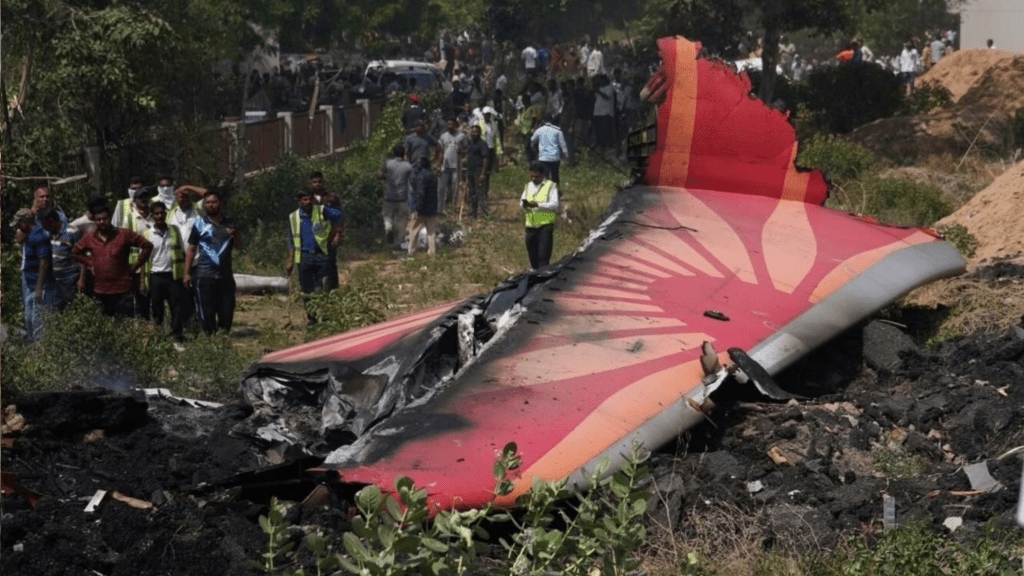A report by a US daily, days after the AAIB’s preliminary report on the Air India crash in Ahmedabad, claims that Captain Sumeet Sabharwal deliberately brought down flight AI 171, which killed 240 passengers. WSJ based its report on cockpit voice recordings and people familiar with the early assessment of evidence by US officials in the crash investigation
Although India’s investigating agency, AAIB, included a section in its report where one pilot asked the other why the fuel switch was turned off, it did not specify who initiated the action. The report also noted another pilot’s response, where he denied doing it. This ambiguity fueled speculations that one of the pilots may have been responsible for the Air India plane crash.
“In the cockpit voice recording, one of the pilots is heard asking the other why did he cutoff. The other pilot responded that he did not do so,” the AAIB report said.
‘Captain turned off fuel switch’
“It was the captain who turned off switches that controlled fuel flowing to the plane’s two engines,” the WSJ report notes.
Even when First Officer Clive Kunder asked Captain Sumeet Sabharwal why he had turned off the fuel supply to the engine, he, as per the WSJ report, “seemed to remain calm”.
The report, which is based on investigators, states that Captain Sumeet Sabharwal did it after the Boeing 787 took off from Ahmedabad. “The first officer expressed surprise and then panicked, while the captain seemed to remain calm,” WSJ further claims.
It also mentions that since the fuel control switches for both engines flipped just one second apart, it points to a deliberate act, WSJ quoted Ben Berman. He assisted in the US-led investigation of the 1999 EgyptAir Flight 990 crash.
‘No evidence suggesting human error’
US aviation expert, Mary Schiavo, has rejected the claims of human error that a pilot downed the Ahmedabad to London flight by cutting off the fuel supply.
“There is no evidence of this,” she told FinancialExpress.com.
The aviation expert added, “The voices, words and sounds on CVRs must be carefully analysed. There is nothing here to suggest pilot suicide or murder. The full transcript of the CVR should be released ASAP to avoid harmful paraphrasing.”
She based this on a similar incident from 2019, involving an All Nippon Airways (ANA) – Japan’s largest airline. She said that the switch moved from “Run” to “Cutoff” without the pilot’s intervention. This raises concerns about a potential software glitch in the Boeing 787, an issue she had flagged earlier.
“There was an ANA flight in 2019 in which the 787 aircraft did this itself, while the flight was on final approach. No pilot input cutting off the fuel whatsoever,” Schiavo told FinancialExpress.com.
She added that the software glitch made the Boeing 787 think that it was on the ground, and that is why the Thrust Control Malfunction Accommodation System (TCMA) cut the fuel supply to the engines.
“The pilots never touched the fuel cutoff,” she told FinancialExpress.com.
‘Reports lack comprehensive data, premature’: FIP
The Federation of Indian Pilots (FIP) expressed “dissatisfaction” and registered “objection” about how the preliminary report has been interpreted and presented publicly. It further urged people not to fall for “premature conclusions”.
“The report lacks comprehensive data and appears to rely selectively on paraphrased cockpit voice recordings to suggest pilot error and question the professional competence and integrity of the flight crew. This approach is neither objective nor complete. We therefore urge our members and the general public not to lend credence to such premature conclusions,” the statement read.
It added, “Assigning blame before a thorough, transparent and data-driven investigation is both premature and iresponsible,” before saying that it undermines the professionalism of highly trained crew members and causes undue distress to their families and colleagues.

